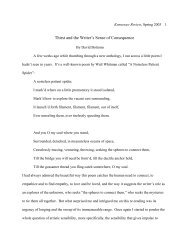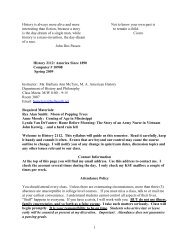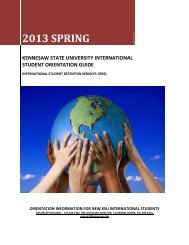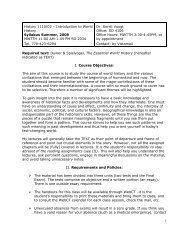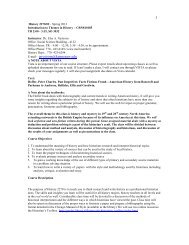Food, Gender and Cultural Hegemony - Kennesaw State University
Food, Gender and Cultural Hegemony - Kennesaw State University
Food, Gender and Cultural Hegemony - Kennesaw State University
You also want an ePaper? Increase the reach of your titles
YUMPU automatically turns print PDFs into web optimized ePapers that Google loves.
Cualli 141<br />
childhood. Thus class in this case becomes a matter of taste as well as education.<br />
Jack Goody speaks of high cuisine as a level of art that is a product of the<br />
combination of a wide variety of foodstuffs, some imported, <strong>and</strong> the cooking<br />
traditions of several regions. In his view this really only comes to pass when<br />
literacy makes it possible to collect the food traditions of various areas. According<br />
to Goody, high cuisine is also distinguished (as for Bourdieu) by being desirable<br />
because of the pleasure of consuming food, rather than because of hunger. Thus<br />
for Goody, “the higher cuisine also incorporates <strong>and</strong> transforms what, from the<br />
national st<strong>and</strong>point, is the regional food of peasants <strong>and</strong> the cooking of exotic<br />
foreigners…Thus the higher cuisine inevitably had to acquire ingredients from<br />
'outside',” (Goody 98-105).<br />
The relevance of this theory about a distinctive elite (or national) cuisine<br />
becomes clear when we remember that both the Nahua <strong>and</strong> the Spanish were<br />
hierarchical peoples, with fairly rigid social rules. Interestingly enough, it may be<br />
that this similarity of the cultures was important in the development of what was a<br />
recognizable national Mexican cuisine by the end of the eighteenth century.<br />
Over the colonial period the Nahua peoples quickly adopted oranges,<br />
chicken <strong>and</strong> pork into their diet, but never developed an affinity for wheat or for<br />
wine. The Spanish against their will were forced to engage in wheat farming<br />
because of indigenous resistance to this crop, which was much less productive than<br />
corn or cassava. Corn, beans, squash, <strong>and</strong> chiles continued as the center of Nahua<br />
food culture. Much of the Nahua aristocracy was eliminated, or, if female, was<br />
incorporated into the class of Spanish conquistadores.<br />
The Spanish improved their diet in the New World through much greater<br />
incorporation of vegetables into their ubiquitous stews. Chiles as well became a<br />
common element, along with corn <strong>and</strong> squash. Some indigenous foods <strong>and</strong> spices<br />
were first incorporated into the European diet for their alleged medicinal properties<br />
(Acosta 177-78; 180-182). The fact that both the Nahua <strong>and</strong> the Spaniard<br />
primarily built their meals around stews <strong>and</strong> some roasted meats made this gradual<br />
approximation of the two food cultures much easier. The high cuisine of the Nahua<br />
represented by the more complex stews, <strong>and</strong> the use of chocolate was gradually<br />
[Type text]



